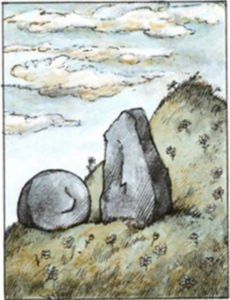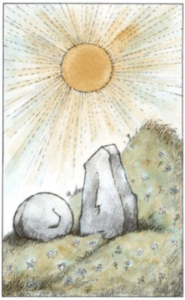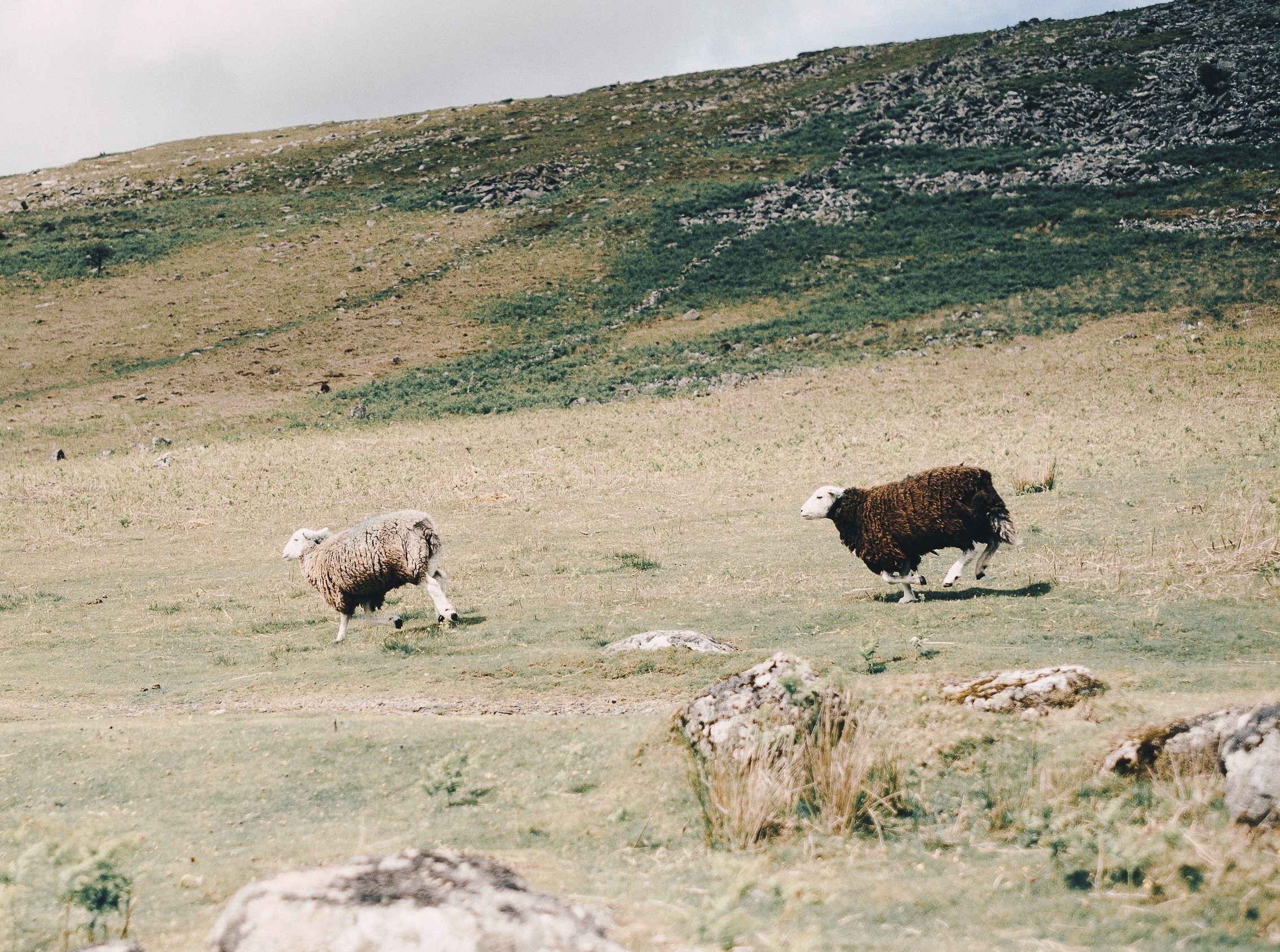A few months ago, I was flipping through some used children’s books, wedged tightly on a store shelf. I came across a book cover so familiar, I knew instantly that I had known and loved it a long, long time ago—even though I could not have remembered anything about it until the very moment I was holding it in my hands again. It felt like a kind of sealed portal to a childhood memory, and I bought it without opening it just yet. When I read it to my daughter that same afternoon, every word and illustration was at once completely new and incredibly familiar.
The book was Mouse Soup by Arnold Lobel, the famous writer and illustrator of Frog and Toad. Mouse Soup is one story that contains several short stories, told by a rodent Scheherazade of sorts to forestall being eaten by a gullible weasel. One of the stories that the protagonist mouse tells is called “Two Large Stones.”
(By the way, I recognize that there’s a certain absurdity to trying to summarize or describe a short children’s story. I’m about to write several paragraphs describing the story when it would probably be quicker to just tell the story or, if I could, hand you the book to read yourself. Several years ago, someone compared someone else to the Little Blue Truck at work, and a colleague asked me who or what it was. I began to explain, but when I got to the part of the story when the Dump Truck comes around the curve, and “he saw a puddle and he tried to swerve”—at that point it somehow felt easier to just recite the rest of Little Blue Truck from memory in order to do the Little Blue Truck character justice, much to my colleague’s amusement. Back to the story at hand.)
“Two Large Stones” is a story about two large stones who sit on the side of a grassy hill. One is round and squat, the other is taller and more jagged.

The first stone (which I personally take to be the roly-poly one, even though it’s ambiguous) says, “This side of the hill is nice. But I wonder what is on the other side of the hill?” The second stone says, “We do not know. We never will.” One day a bird flies down, so they ask the bird to tell them what it sees on the other side. The bird flies up and then returns to report that it sees towns and castles, mountains and valleys: “It is a wonderful sight.” The first stone says, “All those things are on the other side of the hill.” The second stone says, “How sad. We cannot see them. We never will.” And then, “The two stones sat on the side of the hill. They felt sad for one hundred years.” One hundred years!

Then one day, a mouse walks by. The stones ask, “Mouse, can you tell us what is on the other side of the hill?” The mouse climbs to the top to take a look, then returns to report that it sees earth and stones, grass and flowers: “It is a wonderful sight.” The first stone says the bird “told us a lie. That side of the hill looks just the same as this side of the hill.” The second stone is giddy or perhaps relieved: “Oh good! We feel happy now. We always will.”

The story ends there.
I have no idea what sense I made of this story as a child. As an adult, I feel an odd kinship with these two large stones and their hints of noses, their big feelings, their pleasant sense of stuck-ness and rootedness, their unchanging nature through the passage of time, their slightly dangerous curiosity, their simplicity, and their vulnerability. Who hasn’t dared to wonder about what is just out of reach or out of sight? The lives we are not living, by virtue of living our own? Who among us hasn’t felt sad for one hundred stone years (I leave it to you to calculate the human years equivalent) because there was something we wanted, which we imagined we could never have? Who hasn’t let one hundred sad stone years go by without lifting anchor from the past? Who hasn’t neglected to question the truth of another’s perspective, or even our own? And who hasn’t discovered at some point the power of our own perspective? That happiness is also a perspective, and therefore a choice?
The stones do not change. And yet they change completely.
They bring to mind the paradoxical theory of change articulated by a different Arnold, Arnold Beisser, a famous Gestalt therapist: change occurs when one becomes what he is, not when he tries to become what he is not.
Perhaps even more than kinship, what I feel is a smidge of envy. Envy for these two fictional stones who sit in peaceful companionship on their grassy hillside, basking in the sun and soaking in the rain. They wonder about exactly one thing. They receive exactly two pieces of external input to consider. They are sad, and then they are happy. They do not change. They change completely.
As for us? We grow feet and race from one hillside to the next. We constantly seek shade and shelter. We wonder about a million things. We receive about a million pieces of external input to consider. We feel a million things. We feel the million things at the same time. We are always changing. We never change.
And yet, in our own way, each of us is perfect as we are. Once we see that, we are changed.

Be the first to comment